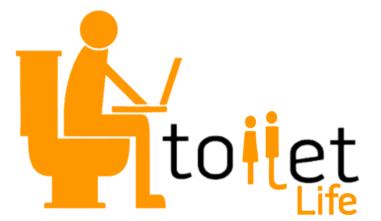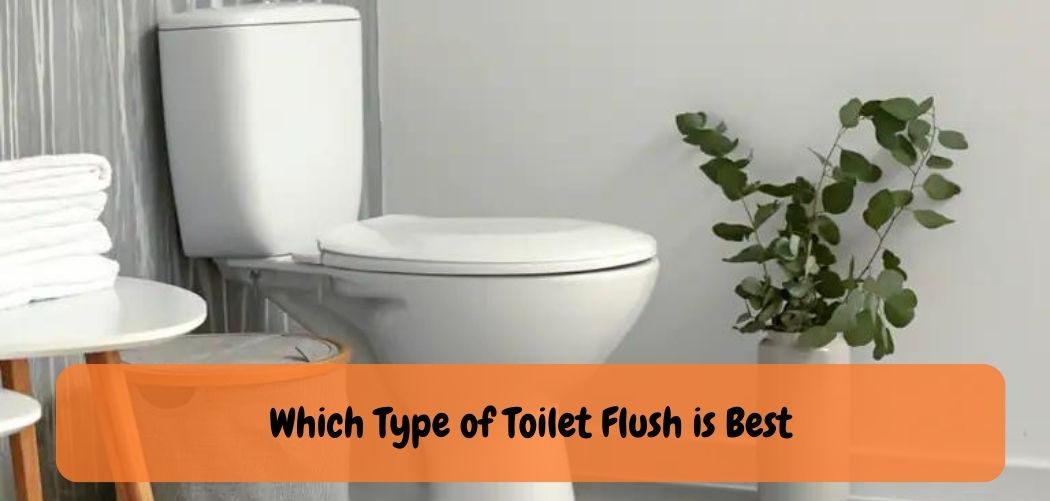When it comes to choosing a toilet for your home or commercial space, one critical aspect that demands careful consideration is the type of toilet flush mechanism. The flush mechanism plays a pivotal role in efficient waste removal, maintaining cleanliness, and conserving water.
However, with a plethora of flush options available on the market, it can be overwhelming to determine which type is truly the best fit for your needs. In this comprehensive guide, we will explore various types of toilet flush mechanisms, examining their unique characteristics, advantages, and considerations.
By understanding the pros and cons of each flush mechanism, you will be equipped to make an informed decision and select the optimal flush mechanism that aligns with your requirements, preferences, and water conservation goals. So, let’s dive in and explore the world of toilet flush mechanisms to find the best one for your bathroom!
The Type of Toilet Flush is Best
Selecting the best type of toilet flush mechanism is a crucial decision when it comes to outfitting your bathroom. The flush mechanism plays a significant role in ensuring effective waste removal, maintaining cleanliness, and conserving water. With several flush options available, each with its own advantages and considerations, it can be challenging to determine which type is truly the best for your specific needs.
In this informative guide, we will evaluate different types of toilet flush mechanisms, examining their strengths, limitations, and suitability for various scenarios. By understanding the characteristics of each flush mechanism, you’ll be equipped with the knowledge to make an informed decision and choose the optimal flush mechanism for your bathroom based on factors such as water efficiency, reliability, and ease of maintenance.
1. Gravity-Flush Toilets:
Overview: Gravity-flush toilets are the most common type, utilizing the force of gravity to empty the bowl. They are reliable, widely available, and often cost-effective.
Advantages: Gravity-flush toilets are generally efficient in water usage, with newer models incorporating water-saving features. They also require minimal maintenance and are compatible with most plumbing systems.
Considerations: Gravity-flush toilets may have limited flushing power, especially with large or solid waste. Clogs can occur, but they are typically easier to clear compared to other flush mechanisms.
2. Dual-Flush Toilets:
Overview: Dual-flush toilets provide users with the option of choosing between two flush settings: one for liquid waste and a stronger flush for solid waste. They are designed to promote water conservation.
Advantages: Dual-flush toilets are highly water-efficient, as they allow users to select the appropriate flush volume for different types of waste. They contribute to reduced water consumption and lower utility bills.
Considerations: Dual-flush toilets may require a slightly higher upfront investment compared to traditional gravity-flush toilets. Additionally, the dual-flush mechanism can be more complex, potentially requiring more maintenance and repairs.
3. Pressure-Assisted Toilets:
Overview: Pressure-assisted toilets utilize compressed air or water to create a forceful flush. They offer increased flushing power and are known for their ability to minimize clogs.
Advantages: Pressure-assisted toilets provide superior flushing performance, making them suitable for high-traffic areas or locations with specific plumbing requirements. They are also effective in reducing clogs and maintaining cleanliness.
Considerations: Pressure-assisted toilets can be louder during operation compared to other flush mechanisms. Additionally, they may have higher upfront costs, and repairs can be more specialized.
4. Touchless Flush Toilets:
Overview: Touchless flush toilets incorporate motion-sensing technology to activate the flushing mechanism, eliminating the need for physical contact with the flush lever or button.
Advantages: Touchless flush toilets offer improved hygiene, as they reduce the spread of germs and bacteria. They provide convenience and a modern aesthetic appeal.
Considerations: Touchless flush toilets may require a power source, such as batteries or electrical connection. They can be more expensive to purchase and may require occasional maintenance of the motion-sensing mechanism.
5. Water Efficiency Considerations:
WaterSense Certification: Look for toilets that carry the WaterSense label, indicating they meet water efficiency criteria established by the U.S. Environmental Protection Agency (EPA). WaterSense-certified toilets are designed to use less water without sacrificing performance.
Flush Volume: Consider the flush volume of each toilet type. Aim for toilets with lower flush volumes for liquid waste and higher volumes for solid waste, as this promotes water conservation.
Flow Restrictors: Some toilets may have flow restrictors that limit the amount of water used per flush, further reducing water consumption.
What is the Best Flushing System for Toilets?

When it comes to choosing the best flushing system for toilets, there are several factors that need to be taken into consideration. The most important factor is water pressure and flow rate. If you have low water pressure or a slow flow rate, then a gravity fed flush toilet may not work well in your home.
On the other hand, if you have high-pressure plumbing with good flow rates, then a power assisted flush toilet might be the right choice for you. Generally speaking, power assisted flushing toilets offer more powerful and effective waste removal than their gravity fed counterparts. Additionally, they use less water than standard gravity systems so they can help conserve resources while still providing an efficient flush every time.
Other considerations include noise level (which can vary greatly depending on brand and model), cost of maintenance and installation (gravity systems tend to be cheaper) and ease of cleaning/maintenance required over time (power assisted systems often require fewer parts). Ultimately, selecting the best flushing system will depend on your individual needs as well as what’s available in your area from local suppliers.
Also Read: Which Toilet Design is Best?
What are the Different Types of Toilet Flushes?

There are several types of toilet flushes available to choose from when it comes to selecting the right one for your bathroom. While all flushing systems work in a similar way, each type has its own unique features and benefits. The most common types of toilet flush include gravity-flush, pressure-assisted flush, dual-flush, and electronic flush toilets.
Gravity-flush toilets use the force of gravity to move water through the bowl and out into the drainpipe. This is generally considered to be one of the least powerful or efficient forms of toilet flushing but it is also among the cheapest options on the market today. Pressure-assisted flush toilets rely on pressurized air instead of gravity to force water down through the bowl quickly and efficiently.
These powerful models can often handle more waste than other models without having to refill as often yet they are typically much more expensive than their counterparts.
Dual-flush toilets provide two separate buttons: one that uses a smaller amount of water for liquid waste (urine) and another that uses a larger amount for solid waste (feces). By separating these two functions you can help save money on your bills since you don’t have to use as much water per flush over time compared with traditional single button designs.
Electronic flush toilets are becoming increasingly popular due to their convenience factor; by simply pressing a button you get an automatic flush every time so there’s no need for manual intervention! Additionally, many modern electronic devices come with additional features such as heated seats or even music players built in – making them great additions for luxury bathrooms everywhere!
Types of Toilet Flush Systems
Conclusion
Determining the best type of toilet flush mechanism depends on a variety of factors, including water efficiency, reliability, ease of maintenance, and personal preferences. Throughout this comprehensive guide, we have explored different types of toilet flush mechanisms, such as gravity-flush, dual-flush, pressure-assisted, and touchless flush systems, highlighting their respective advantages and considerations.
Gravity-flush toilets offer simplicity, widespread availability, and efficient water usage, making them a reliable choice for many households. Dual-flush toilets provide the flexibility of adjusting water consumption base on the type of waste being flush, promoting water conservation. Pressure-assisted toilets offer superior flushing power and reduced clogging, making them suitable for high-traffic areas or specific plumbing requirements. Touchless flush toilets bring the added benefits of improved hygiene and convenience.
When selecting the best type of toilet flush mechanism, consider your priorities, budget, and the specific needs of your household or establishment. It is also crucial to consult local regulations and plumbing requirements and seek professional advice if needed.

